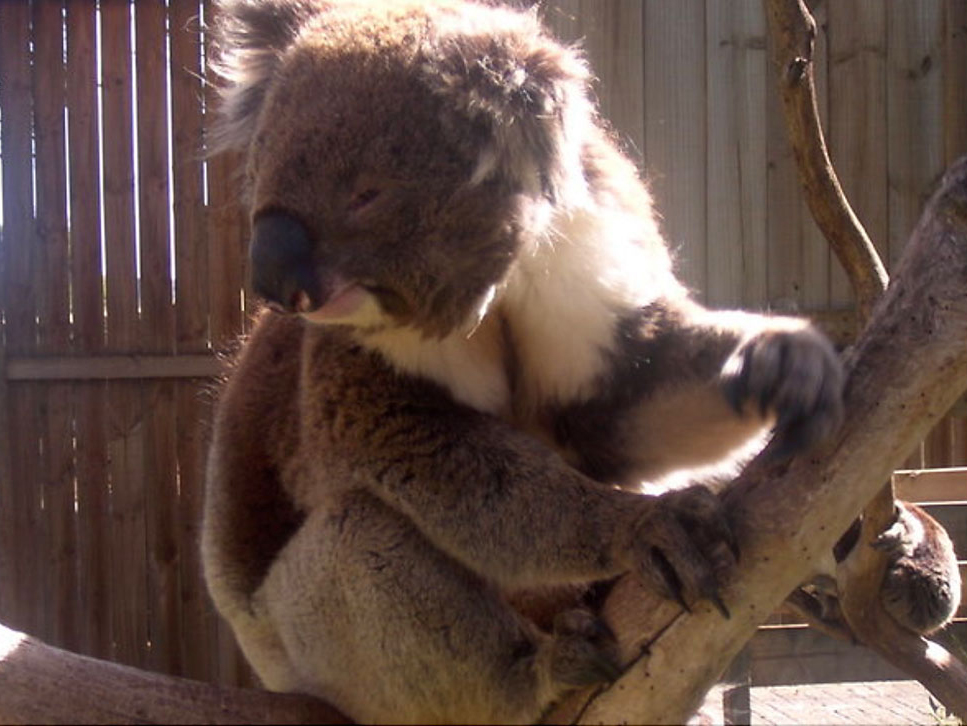The Danger of Viral Falsehoods in Conservation
By David Samuel Shiffman
A viral-but-wrong story claiming that koalas are at greater risk of extinction than they are demonstrates the worst of social media.
November 26, 2019
Macroscope Communications Environment Ethics Policy Nature Conservation
“Koalas are functionally extinct after fires destroy 80% of their habitat,” claimed a news article that, as of this writing, has been shared hundreds of thousands of times on Facebook and will very likely be one of the most-shared science or environment news stories of 2019. If you were on Facebook this weekend, you probably saw it. Maybe you even shared it. You’d think that as a conservation biologist who studies how information related to conservation is discussed by stakeholders, I’d be thrilled to see a story about a threatened species get so much attention. But you’d be wrong, because the story is wrong. And sharing wrong information helps no one.

Photo by the author at Phillips Island Wildlife Park in 2006.
How wrong is the article? A quick search of this article and this article, which both quote and link to a variety of experts and not just one dubious, months-old press release, reveals the following facts:
Recent Australian fires didn’t destroy 80 percent of koala habitat; it’s probably more like 1 percent (arguably, a much higher percentage of the habitat of one subpopulation of koalas was affected). Overall koala population numbers haven’t dropped anywhere near as much as the only group quoted in that viral article has repeatedly claimed, without ever showing evidence of their claims. Koala populations are nowhere near “functionally extinct” (which is a technical term with a specific definition and is not a synonym for “in some degree of conservation trouble.”) And what’s more, the biggest threat facing koalas isn’t wildfires, whose frequency and severity have increased because of climate change, but rather is direct habitat destruction by humans, who are turning wilderness into towns and farmland.
One might think that a little exaggeration in support of a good cause is no big deal, or that it’s even a Good Thing to get people more riled up than they need to be, because koala conservation is an Important Cause and you need to behave drastically to get anything to break through in today’s media landscape. The problem is simple: A person’s understanding of the severity of a conservation threat and their understanding of what policy solutions are available for addressing that threat affect what policy solutions they support. Research shows that people who wrongly believe that a problem is much worse than it is are more likely to support different policy solutions than experts.
This potential for bad policy can lead to needless conflict between stakeholders, scientists, and managers, as well as policy outcomes that aren’t those best supported by scientific evidence. For example, people who believe that sustainable fisheries are impossible are more likely to support total bans on all fishing, even though experts tend to support policy that allows some fishing but prevents overfishing.
In other words, this kind of false information isn’t a case of a little hyperbole and poetic license getting people to finally pay attention to an issue and an expert-backed solution. Rather, it’s a case of lying to bring tons of angry attention toward a small part of the problem that can’t be solved the same way as the rest of the problem. One of the very few silver linings of the massive conservation cloud we’re facing is that the actual real truth is quite scary and bad, which means we don’t need to lie in order to get people’s attention.
As anyone who follows me on social media knows, this koala-news fiasco is not an isolated incident. This sort of thing happens a lot. And it doesn’t just increase public misunderstanding while taking attention away from real problems and real solutions (what about all the Important Causes that don’t lie or exaggerate and get their thunder stolen by this kind of stuff?) It also can have a more insidious effect. Sharing easily debunked nonsense in support of a good cause results in that nonsense getting debunked, which can undermine support of your cause! And when experts point out that a viral claim about science and the environment is wrong, it sometimes leads to people getting angry at the scientists and other experts correcting the record, which risks further undermining public trust in science and evidence-based conservation in general. The conflict between stakeholders, scientists, and managers mentioned above is no joke; I’ve gotten death threats from people who, to put it mildly, misunderstand some of the nuances of fisheries policy.
There’s no doubt that koalas are in conservation trouble and need our help! But it’s important to know how much trouble they’re in, why they’re in trouble, and what the best ways to help are. The article that far too many people shared is wrong on every one of these important points, and highlights the worst of social media. Social media tools can be a powerful force for spreading information that can be used to help people as well as wildlife and wild places. But far too often, as with this example, they’re used to spread scary-sounding, wrong information that doesn’t help.
The views and opinions expressed in this post are the author’s own and do not necessarily represent the views of American Scientist or its publisher, Sigma Xi.
American Scientist Comments and Discussion
To discuss our articles or comment on them, please share them and tag American Scientist on social media platforms. Here are links to our profiles on Twitter, Facebook, and LinkedIn.
If we re-share your post, we will moderate comments/discussion following our comments policy.